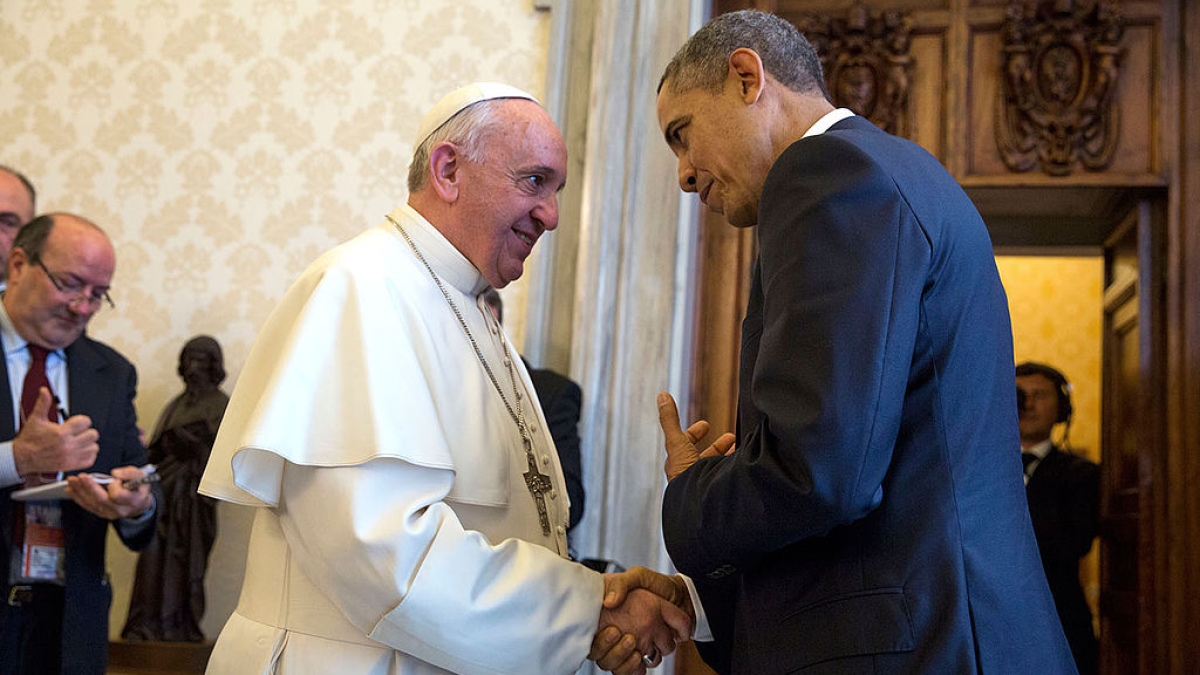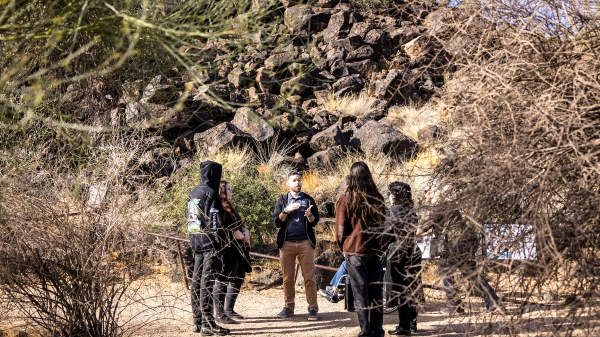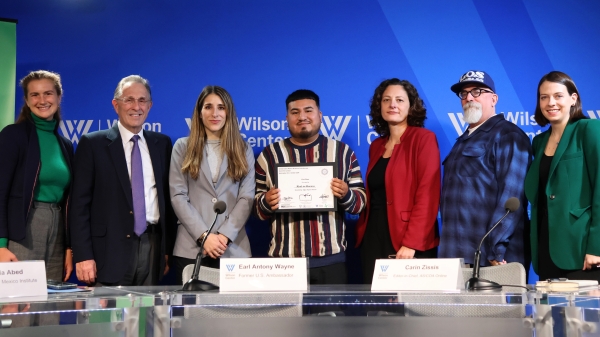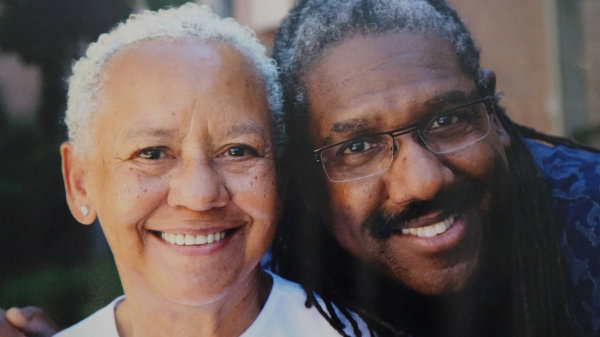ASU experts weigh in on Pope Francis' speech to Congress

Pope Francis (shown with President Barack Obama at the Vatican on March 27, 2014) is drawing both cheers and criticism for his views delivered before Congress on Thursday.
Photo by: Pete Souza/White House
Pope Francis’ speech to Congress on Thursday, the first by a pontiff, made history and invited a different perspective in an institution packed with entrenched viewpoints.
“Pope Francis has a remarkable ability to enlarge issues that have been divisive and find room within them to bring everyone together,” said Tracy Fessenden, an associate professor in Arizona State University’s School of Historical, Philosophical, and Religious Studies.
The emotion of Vice President Joe Biden, a Catholic Democrat, showed almost as much as the tears of House Speaker John Boehner, a Catholic Republican from Ohio who invited the Pope.
“That’s testimony,” Fessenden said, “that the pope can speak to both sides of the aisle in a powerful way.”
Or use faith to address a contentious issue enmeshed in science.
“One reason climate-change policy has become so dysfunctional is precisely because it was initially viewed as a matter of science,” Brad Allenby, professor of engineering and ethics at ASU, wrote in an op-ed for the Arizona Republic. “It necessarily involves questions of morality, religion, culture, values, economics and other non-scientific perspectives…under such circumstances, it seems entirely appropriate for religious figures and institutions to become part of the discussion.”
In a chamber where debate over illegal immigration splinters the members, Francis spoke as a son of immigrants reminding a nation of them that they were once foreigners.
Roughly 30 percent of Arizona’s population is Hispanic or Latino, with undocumented immigration fueling that growth, and 52 percent of the state's Hispanics and Latinos identify as Catholic, according to the Pew Research Center. They see this Pope quite differently, as extraordinary, said Gary Kellers, ASU Regents’ Professor and director of the university’s Hispanic Research Center.
“It is a great occasion of pride among Latinas/os that he is a native-born, native speaker of Spanish,” Kellers said, “and is really involved in Hispanic issues and interests.”
Francis provides a different lens even for those of his faith, Fessenden said, but not a break from the church.
“What he’s doing is retrieving a deep message that is already a part of Catholicism,” she said. “What we saw in his speech is that Francis is really a great conciliator.”
The viewpoint he brings is inclusive, ASU experts said, rather than disruptive and progressive.
“Francis is concerned about growing the church and the need to speak to those who have fallen away,” said John Carlson, associate professor of religious studies and associate director of the Center for the Study of Religion and Conflict at ASU “He is trying to show that while official church teachings may not change, a pastoral emphasis on welcoming in and expressing forgiveness or showing mercy to those who have felt ostracized from the church is a way to bring them back into the fold.”
Was the seat of national government the right place?
“Most Catholics recognize … that religion and politics do intermix at times,” Carlson said, “and at times in very constructive ways.”
More Arts, humanities and education

Petroglyph preserve celebrates 30th anniversary with ancient, modern tales
The Deer Valley Petroglyph Preserve provides a beautiful walk through a pristine desert where chuckwalla lizards are as plentiful…

Kaleidoscope short film contest inspires powerful binational filmmaking in its second year
“We come to this country not to steal anybody’s jobs but to take advantage of the opportunities that the rest ignore. We’ve been…

ASU's Neal Lester reflects on life, death of poet Nikki Giovanni
When Neal Lester heard on Monday that poet and activist Nikki Giovanni had died, the news hit hard.Lester, the founding director…